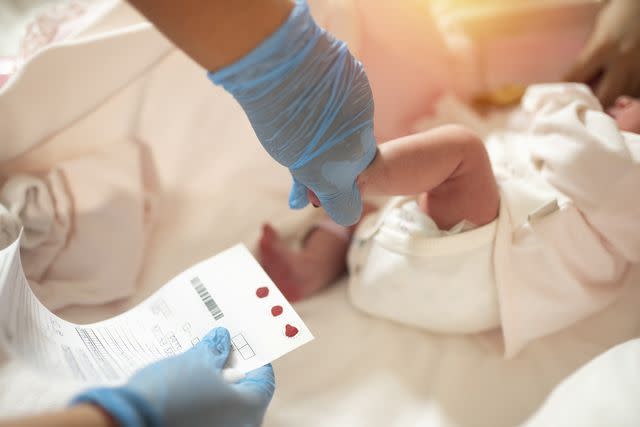Thalassemia: Understanding the Inherited Blood Disorder
Types, Symptoms, Diagnosis, and More
Thalassemia is an inherited blood disorder that causes hemolytic anemia. Hemolysis is a term to describe the destruction of red blood cells.
In adults, hemoglobin is made of four chains—two alpha chains and two beta chains. In thalassemia you are unable to make either alpha or beta chains in adequate amounts, making your bone marrow unable to make red blood cells properly. The red blood cells are also destroyed.

Is There More Than One Type of Thalassemia?
Yes, there are multiple types of thalassemia, according to the National Organization of Rare Diseases (NORD). NORD breaks these types down into five subdivisions including Alpha thalassemia silent carrier, alpha thalassemia minor (trait), hemoglobin H (HbH) disease, hemoglobin H-Constant Spring, and Hb Bart's hydrops fetalis.
What Are the Symptoms of Thalassemia?
The signs and symptoms of thalassemia vary based on the different types of the blood disorder and vary accordingly, reports the Mayo Clinic.
Some of those symptoms include:
Fatigue
Weakness
Pale or yellowish skin
Facial bone deformities
Slow growth
Abdominal swelling
Dark urine
How Is Thalassemia Diagnosed?
In the United States, more severely affected patients are usually diagnosed via the newborn screening program. More mildly affected patients may present at a later age when anemia is identified on a complete blood count (CBC). Thalassemia causes anemia (low hemoglobin) and microcytosis (low mean corpuscular volume).
Confirmatory testing is called a hemoglobinopathy work-up or hemoglobin electrophoresis. This testing reports the types of hemoglobin you have. In an adult without thalassemia, you should only see hemoglobin A and A2.
John Hopkins Medicine reports on the blood disorder, noting there are two damaged genes in beta thalassemia major, also called Cooley's anemia. There is only one damaged gene in beta thalassemia minor, also called thalassemia intermedia. When some or all four hemoglobin genes are damaged that is alpha thalassemia.
Who Is at Risk for Thalassemia?
Thalassemia is an inherited condition. If both parents have alpha thalassemia trait or beta thalassemia trait, they have a one in four chance of having a child with thalassemia disease. A person is either born with thalassemia trait or thalassemia disease—this cannot change. If you have thalassemia trait, you should consider having your partner tested prior to having children to assess your risk of having a child with thalassemia.
How Is Thalassemia Treated?
Treatment options are based on the severity of the anemia.
Close observation: If the anemia is mild to moderate and well-tolerated, your physician may see you on a regular basis to monitor your complete blood count.
Medications: Medications like hydroxyurea, which increases your production of fetal hemoglobin, have been used in thalassemia with varying results. The drug Reblozyl, which improves red blood cell maturation, was also FDA-approved for adults with transfusion-dependent beta-thalassemia in November 2019. The drug reduces the need for blood transfusions.
Blood transfusions: If your anemia is severe and is causing complications (e.g., significant splenomegaly, thalassemic facies), you may be placed on a long-term transfusion program. You will receive blood transfusions every three to four weeks in an effort to have your bone marrow make as few red blood cells as possible.
Bone marrow (or stem cell) transplantation: Transplantation can be curative. The best results are with closely matched sibling donors. Other options include. Zynteglo (betibeglogene autotemcel). Zynteglo is the first cell-based gene therapy for beta-thalassemia approved for the treatment of patients with beta-thalassemia who need regular red blood cell transfusions. Zynteglo is an individualized single-dose treatment created by modifying the patient's own bone marrow stem cells to produce functional beta-globin.
Iron chelation: Patients who receive chronic blood transfusions acquire too much iron from the blood (iron is found inside red blood cells). Additionally, people with thalassemia absorb greater amounts of blood from their diet. This condition, called iron overload or hemochromatosis, causes iron to be deposited in other tissues in the liver, heart, and pancreas, causing damage to these organs. This can be treated with medications called iron chelators, which help your body get rid of excess iron.

